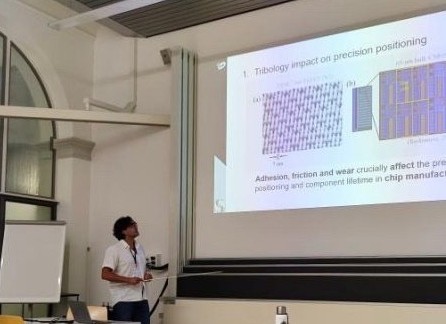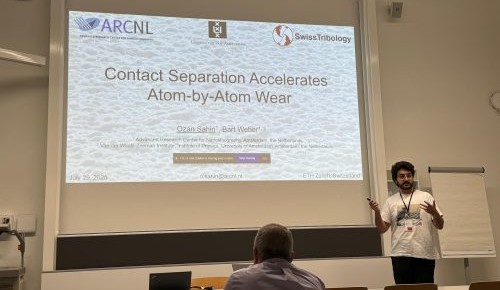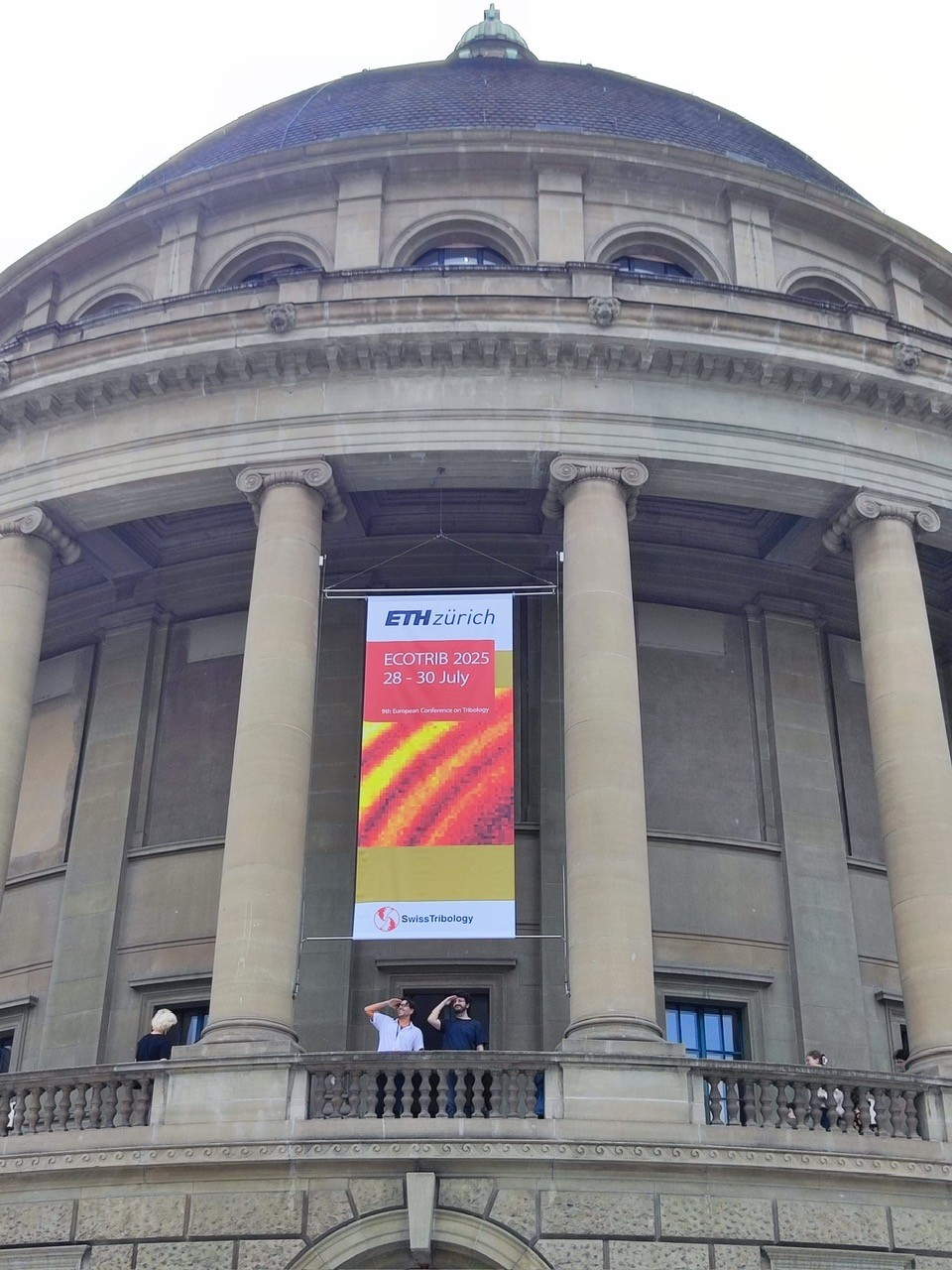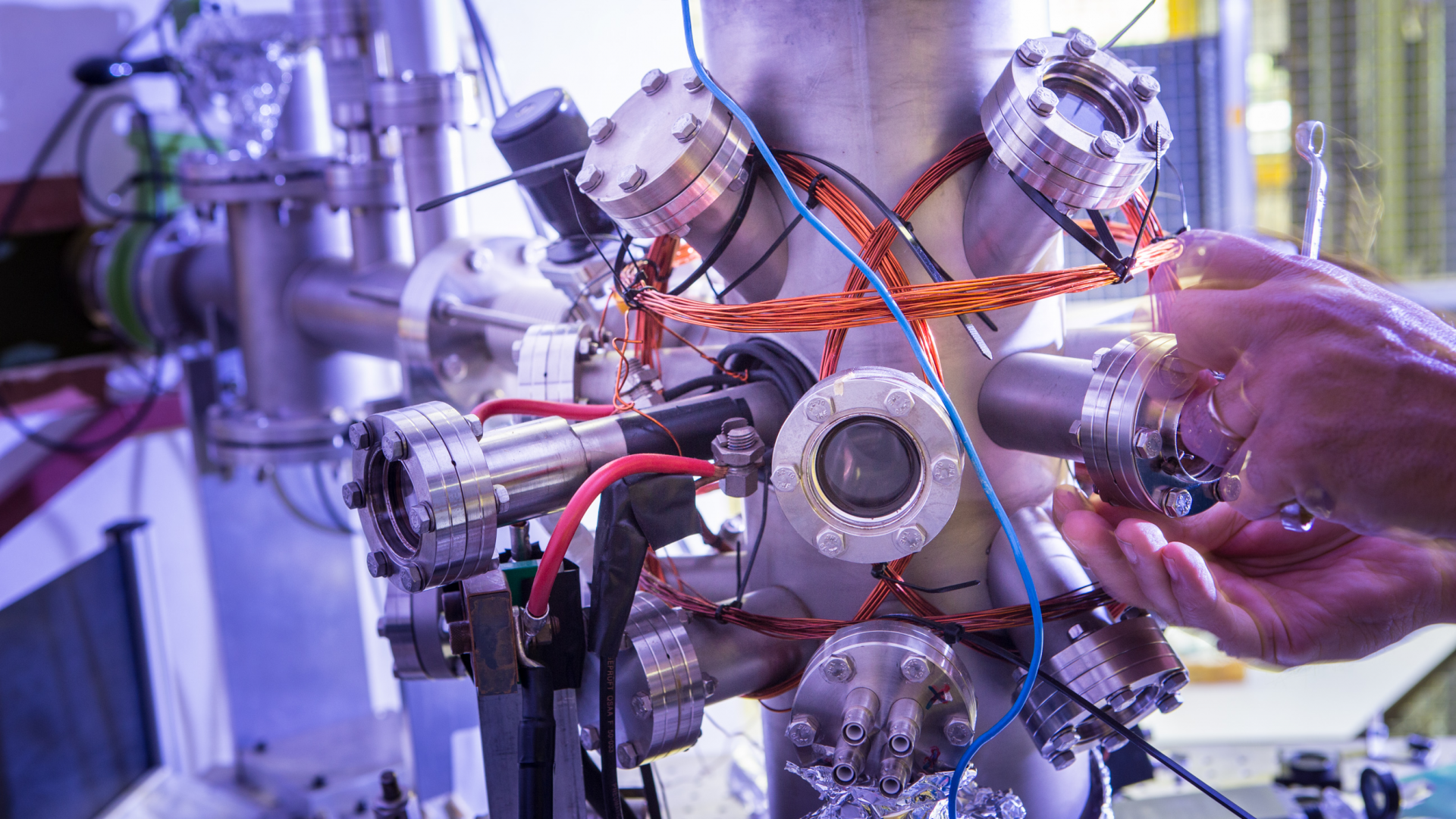ARCNL researchers share results and ideas at ECOTRIB 2025
The Contact Dynamics group at ARCNL was featured at the 9th European Conference on Tribology (ECOTRIB 2025), held in the iconic main building at ETH Zürich. ARCNL postdoctoral researcher Dr. Tunç Çiftçi and PhD student Ozan Şahin gave two oral presentations and chaired a scientific session. This biennial conference, organized under the umbrella of Swiss Tribology, brought together researchers from over 20 countries to share and discuss the latest advances in research on friction, wear, lubrication, and nanoscale surface interactions.
Electric fields, surface stickiness, and atom loss

ARCNL postdoctoral researcher Dr. Tunç Çiftçi gave an oral presentation on July 29, titled “Hysteresis in Adhesion through Biasing in Semiconductor Surfaces.” His work explored how the water attracted to surfaces by electric fields can affect the way those surfaces stick to each other. He also looked at how this surface stickiness can persist even minutes after removing the electric field. This delayed change in surface adhesion is a critical mechanism in semiconductor systems, for controlling how materials wear down at nano scale. The research could help with improving the design of precision positioning components, which are vital in high-end computer chip manufacturing.

In a parallel session on the same day, ARCNL PhD candidate Ozan Şahin presented his findings, titled “Contact Separation Accelerates Atom-by-Atom Wear.” His talk examined how interactions driven by the separation between atoms in materials initiate ultra-slow, atomic-scale material loss at contact points between solid surfaces. This novel insight into atom-by-atom wear enhances our understanding of how mechanical energy dissipation, such as vibration, affects junction lifetime in nanoscale systems, a cornerstone for engineering reliable nanomechanical devices.
Sharing scientific ideas

Beyond their presentations, Tunç and Ozan had the opportunity to engage in a scientific discussion with Ahmed Uluca, a PhD researcher from Trinity College Dublin, and Sir John Pethica. Sir John is the inventor of the nanoindenter (used for measuring the hardness of materials) and was a pioneering figure in the development of atomic force microscopy (AFM). AFM is a high-precision surface imaging technique, used in Tunç and Ozan’s work in Bart Weber’s Contact Dynamics lab.
The conversation offered a rare chance to connect fundamental mechanics at nanoscales with frontier experiments in the field of tribology, the study of friction, lubrication, and wear. This exchange of ideas provided valuable conceptual clarity and fresh collaborative perspectives on the latest experimental observations related to how surfaces transfer material to each other at contact interfaces.
On the final day of the conference, Tunç also chaired a discussion session on data analysis and modeling, leading discussions on advanced simulation methods and predictive modeling in tribological systems. His moderation further reflected ARCNL’s role in shaping the intellectual direction of the meeting.
Hosting the event at ETH Zürich made it especially exciting, as one of Europe’s most renowned technical universities, alma mater to Albert Einstein and home to over 20 Nobel laureates. The setting fostered an atmosphere not only of academic rigor but also of cultural richness and interdisciplinary collaboration.
The tribology community and ARCNL
ARCNL’s active participation at ECOTRIB 2025 showcased its leadership in nanoscale tribology and surface physics, affirming its commitment to addressing tribological challenges in advanced manufacturing through fundamental research and international engagement.
For more tribology news at ARCNL, visit the Contact Dynamics group page: Contact Dynamics – ARCNL








